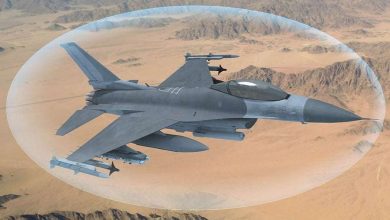
Revolutionary Eagle Passive Active Warning System by BAE Systems Soars in F-15 Operational Challenges
The United States Air Force has recently concluded the Initial Operational Test & Evaluation (IOT&E) of the Eagle Passive Active Warning Survivability System (EPAWSS), validating the groundbreaking capabilities that BAE Systems’ cutting-edge system introduces to the F-15. EPAWSS provides vital electronic warfare (EW) features for the F-15E Strike Eagle and the F-15EX Eagle II aircraft.
“EPAWSS was conceived for enhancement and rapid capability integration,” expressed Amy Nesbitt, EPAWSS program manager at BAE Systems. “We’re employing agile software practices to deliver iterative updates to operational EW systems—enabling our users to tackle forthcoming electromagnetic challenges.”
EPAWSS bestows immediate comprehensive EW competencies—including radar notifications, geolocation, situational awareness, and self-defense. The system promotes operational adaptability and permits deeper penetration into combat regions protected by contemporary integrated air defense systems.
“EPAWSS represents a technological leap, boosting the lethality and operational effectiveness of the F-15E and F-15EX in challenged and compromised settings against advanced threats,” noted Maj Bryant “Jager” Baum, EPAWSS Test Director for the Air Force Operational Test & Evaluation Center (AFOTEC). “EPAWSS has set the benchmark for electronic warfare in the fighter domain.”
BAE Systems assisted AFOTEC in executing the EPAWSS IOT&E and is presently focused on manufacturing and deploying one of the world’s most sophisticated EW systems, enhancing the F-15’s ability to conduct combat missions. The organization is closely cooperating with Boeing and the U.S. Air Force to strengthen the system’s precise EW functionalities, including the application of cognitive EW, as demonstrated during the Northern Edge 2023 (NE23) large-scale force exercise testing scenario.
“Our robust collaboration with the U.S. Air Force empowers us to enhance EPAWSS cognitive processing capabilities,” stated Chip Mosle, program director at BAE Systems. “By continually testing and deploying cognitive EW solutions to existing systems like EPAWSS, we facilitate tactical electromagnetic dominance against advanced threats that are unpredictable, adaptive, and versatile.”
The NE23 event evaluated EPAWSS’ ability to quickly respond to new electromagnetic threats. The assessments examined the system’s capability to process in-mission sensor inputs, devise complex techniques, and optimize waveforms in real-time. Furthermore, the NE23 environment challenged the system to execute operations within a crowded, dynamic electromagnetic arena at a theater exercise scope.
BAE Systems oversees the EPAWSS program at its facilities in Nashua, New Hampshire, and Austin, Texas, actively fabricating EPAWSS components to support F-15EX new-aircraft assembly and F-15E aircraft fleet enhancements.







